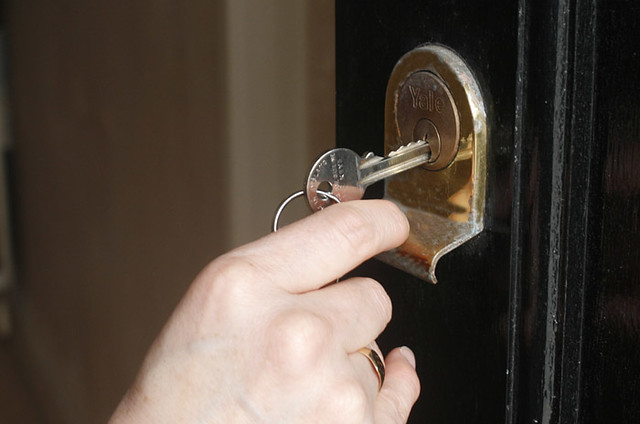
The fate of Illinois’ constitutionally mandated flat tax lies in the hand of voters, who will decide on Nov. 3, 2020 whether or not to adopt the Proposed Amendment to the 1970 Illinois Constitution— also known as the “fair tax” amendment or the “Illinois Allow for Graduated Income Tax Amendment.”
A NO vote would uphold the state’s current 4.95% flat income tax rate. A YES vote would open the door for significant state income tax hike, with the top rate rising to 7.99%.
By voting YES, voters will eliminate the only safeguard Illinois taxpayers have against income tax hikes, the flat tax— allowing Governor J.B. Pritzker and the Democrat-controlled state legislature to impose some of the highest tax rates in the nation with little or no recourse. If the measure is approved, on January 1, 2021 Illinois would move from a flat 4.95% income tax to new six bracket system with rates ranging from 4.75% to 7.99%, resulting in a $3.7 billion income tax increase.
It’s important to note that although the new rates and brackets, as passed by the Democrat-led legislature under SB 687 in 2019, are separate from the proposed constitutional amendment, this $3.7 billion income tax hike is completely dependent upon voters permitting a graduated-rate income tax structure.
Proponents of the progressive tax amendment are selling it as the be-all-end-all solution for ending the state’s infamous budgetary woes, claiming SB 687 will actually lower taxes for 97 percent of Illinois residents. The former is a flat out lie, whereas the latter is barely even a half truth.
If the amendment is approved, it’s true that Illinois taxpayers with up to $100,000 in income would see their marginal tax rate drop from 4.95% to 4.75% or 4.90% depending on their income level. However, the expected $3.7 billion in new revenue raised off the backs of the rest of the populace would barely make a dent in Illinois’ whopping $226 billion deficit.
Further, the proposed amendment does not contain language that limits the amount of tax brackets state lawmakers can create or how high they can raise taxes. The graduated income tax measure also provides zero accountability measures on how the new money will be spent and fails to address years of runaway spending. Keep in mind the Governor has promised over $10 billion in new spending despite the state being broke. Odds are any tax relief for middle and lower-income families would be short-lived.
According to research conducted by Americans for Tax Reform, government spending has ballooned over the last decade. In fact, Illinois had the nation’s second highest increase in spending per capita, rising 29.30%, between 2010 and 2018. During this time, Illinois raised the state income tax twice to fund this out-of-control spending. Further, just last year state lawmakers hit taxpayers with 20 new tax increases including the doubling of the gas tax, vehicle registration fee hikes, and the increase of online sales taxes. Even with all these tax increases the state still had an $8 billion budget deficit and an unfunded pension liability over $137 billion prior to the Covid-19 pandemic.
As the Illinois Policy Institute points out, for Democratic lawmakers to fully finance all of the Governor’s campaign promises and plug budget holes, a typical middle-class family could end up paying $3,500 more in income taxes. Even Gov. Pritzker admits that “there’s certainly no guarantees” that the amendment would protect middle and lower-income Illinoisans from future tax hikes.
The governor’s claim that there’s certainly no guarantees is correct. Take, for instance, Connecticut—the one state that has swapped out its flat income tax for a progressive income tax in the last 30 years. Nutmeg State lawmakers touted the progressive income tax as a way to fix state finances, address inequality, and promised spending restraint. However, that’s not what happened. It instead, cost the state’s economy over $10 billion, 360,000 jobs, and middle class families have seen their income tax rates climb over 13% and their property tax burden increase by more than 35% since 1999—the year that the personal income tax was first collected. As a result of these failed policies, Connecticut dons the 6th highest outmigration rate in the nation.
If voters need another reason to reject a progressive income tax structure with the higher rates set by SB 687, it’s worth remembering that it would kill jobs and small businesses by imposing the second-highest business tax rate in the nation. Under the Governor’s Fair Tax Plan, the corporate tax rate would rise from 7% to 7.99%, and when you take into account the 2.5% replacement tax already imposed on Illinois corporations, the total taxable rate is 10.49%. In 2018, the U.S. Bureau of Labor Statistics reported that Illinois’ private sector job growth ranked 46th out of 50 states. With the coronavirus pandemic looming over the heads of local businesses, many of which are on the brink of bankruptcy, the proposed Illinois income tax hike would exacerbate the financial hardships of a dilapidated economy.
A study conducted by the University of Illinois indicated that the state of can expect more than half a million full-time job losses and tens of billions of dollars in lost income over the next year as a result of the novel coronavirus. Illinois had already lost a record 850,000 residents over the last decade. By instituting another financial requirement on employers, this would be the last straw for thousands of small businesses and large employers, driving them to leave the state.
Giving Illinois lawmakers a blank check to spend billions of taxpayer dollars however they please will not provide a different outcome this time. The only way to address the state’s financial crisis is by reining in/reforming government spending in a way that taxpayers can afford. If taxpayers in Illinois truly wish to take a stand for fiscal responsibility and accountability, they should vote ‘NO’ on the graduated income tax amendment this November.

